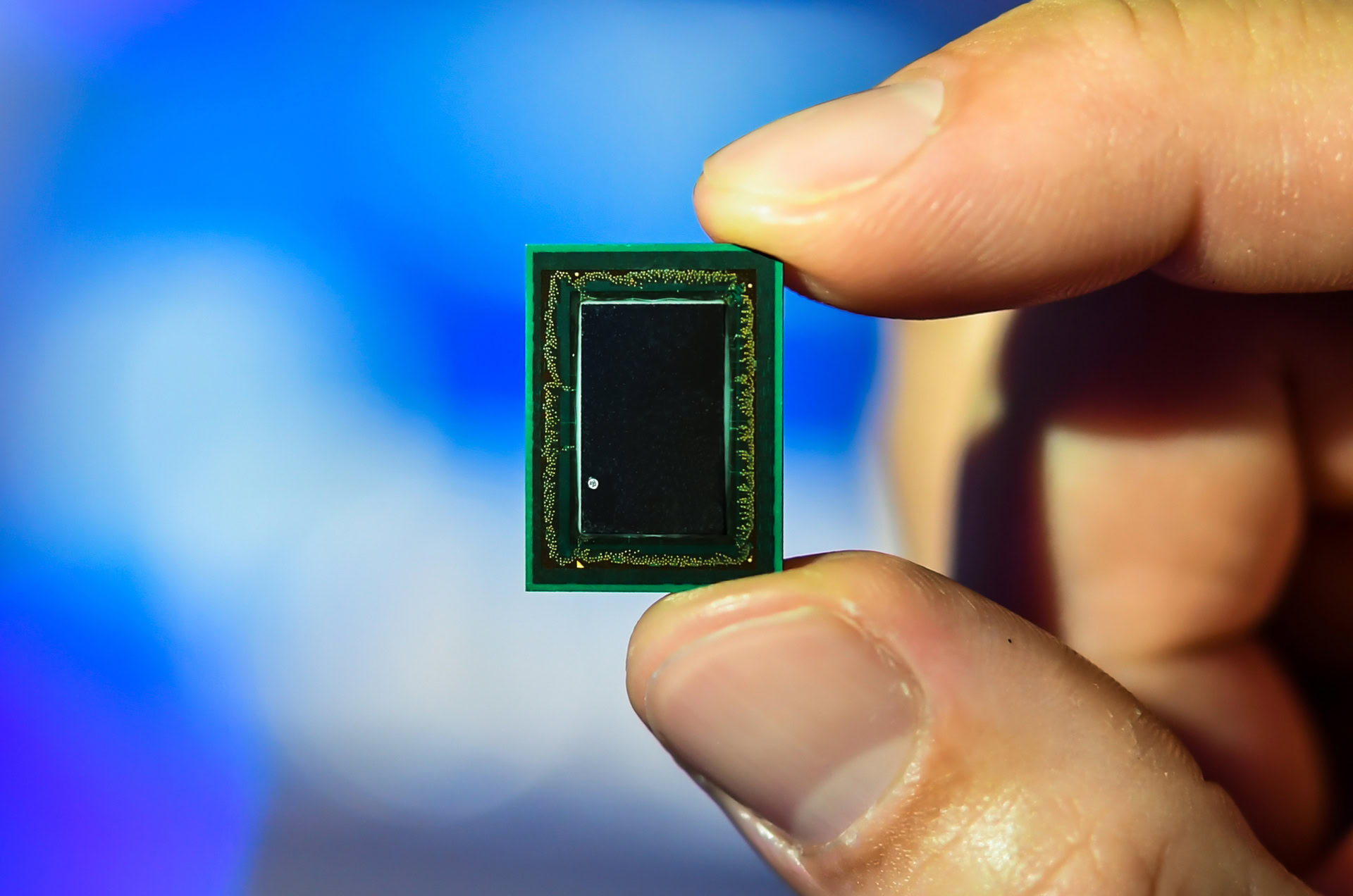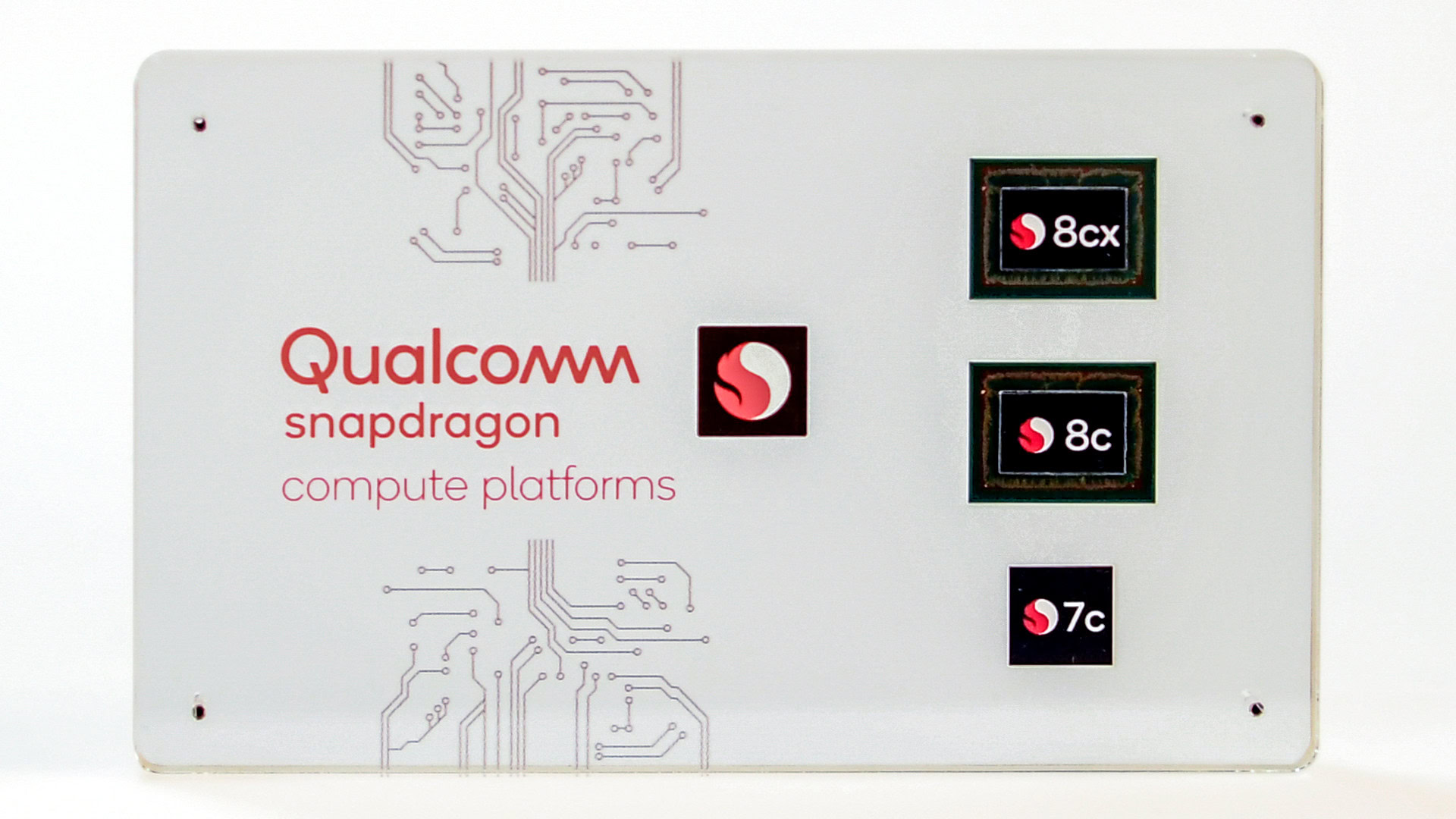Affiliate links on Android Authority may earn us a commission. Learn more.
Beyond phones: Qualcomm unveils affordable 4G laptop and 5G mixed reality chips

We’re into the final day of 2019’s Snapdragon Tech Summit, but the announcements aren’t over. Qualcomm has lifted the lid on three more chipsets, this time for the laptop market, as well as a second-generation XR platform for 5G mixed reality devices. Qualcomm clearly has confidence in the Arm on Windows initiative, announcing two all-new platforms for the connected laptop market. The Qualcomm Snapdragon 8c slots in just below the flagship Snapdragon 8cx, offering high-end performance and connectivity features. Meanwhile, the Qualcomm Snapdragon 7c laptop lands as a more affordable connected laptop chip option.
In the augmented, mixed, and virtual reality (XR) space, the company is launching its Qualcomm Snapdragon XR2 platform. This is Qualcomm’s second-generation extended reality platform and the first with baked in 5G-support.
Meet the Qualcomm Snapdragon 8c and Snapdragon 7c
As the name suggests, the Qualcomm Snapdragon 8c is a slightly less powerful and less costly version of the flagship Snapdragon 8cx. It’s targeted as a mainstream option for Windows on Arm laptops. This chip will likely end up in the $500 to $650 price segment.
There’s the familiar Snapdragon X24 LTE modem onboard, offering 2Gbps download and 316Mbps upload speeds on gigabit LTE networks. The Snapdragon 8c can also be paired up with the Snapdragon X55 modem for 5G connectivity in an affordable laptop form factor. The connected PC aspect is still very much at the forefront of Qualcomm’s design.
Also read: Everything you need to know about the Snapdragon 865
In terms of performance, the Snapdragon 8c boasts up to a 30% improvement over Qualcomm’s first laptop specific chipset, the Snapdragon 850. On the CPU side, there are two Cortex-A76-based cores with a 2.45GHz clock speed and four smaller Cortex-A55-based Kryo cores. The GPU is an Adreno 675, placing it above flagship smartphone tier performance. The 8c is also loaded with Qualcomm’s AI Engine, providing 6TOPS of accelerated machine learning performance. That’s less than you’ll get in flagship mobile chips, but still a notable amount of AI performance. There’s also support or fast UFS3.0 and NVMe SSD class storage, just like the premium tier 8cx.
The Snapdragon 8c can pair with the Snapdragon X55 modem for 5G connectivity.
The lower-end Snapdragon 7c is targeted at the entry level of the market, with prices probably ending up in the $300 to $500 range. Think Intel Celeron Pentium end of the market. The 7c features an octa-core Kyro 468 CPU, paired up with a mobile-class Adreno 618 GPU. The CPU configuration features two powerful Cortex-A76-based cores clocked at 2.4GHz, paired up with six power-efficient Cortex-A55 cores.
There’s up to 10GB LPDDR4 RAM at 2133MHz support, too. Although most actual devices will probably ship with 4GB or 8GB RAM. UFS 3.0 and eMMC 5.1 storage support will feel familiar to smartphone users. eMMC is a more affordable option, but is an acceptable tradeoff to make connected PCs more affordable.
Gaming definitely isn’t this chip’s strong suit compared to the powerhouse 8cx or the mid-tier 8c, but it’s not targeting the same market. The chip’s Qualcomm AI Engine provides 5TOPS of performance, which is close to what you’ll get from the new Snapdragon 765 phone chip. The Snapdragon 7c is certainly no slouch and offers notable improvements over its Snapdragon 850 predecessor. However, most of its underlying technology feels very familiar to smartphone aficionados. Overall, the 7c looks capable enough for the entry-level PC market.
Snapdragon 8cx, 8c, and 7c compute platform specs
| Snapdragon 8cx | Snapdragon 8c | Snapdragon 7c | |
|---|---|---|---|
CPU Core | Snapdragon 8cx Semi-custom ARM Cortex - Kryo 495 | Snapdragon 8c Semi-custom ARM Cortex - Kryo 490 | Snapdragon 7c Semi-custom ARM Cortex - Kryo 468 |
CPU Config | Snapdragon 8cx 4x (Cortex-A76) 4x (Cortex-A55) | Snapdragon 8c 4x @ 2.45GHz (Cortex-A76) 4x (Cortex-A55) | Snapdragon 7c 2x @ 2.4GHz (Cortex-A76) 6x (Cortex-A55) |
GPU | Snapdragon 8cx Adreno 680 Extreme | Snapdragon 8c Adreno 675 | Snapdragon 7c Adreno 618 |
DSP | Snapdragon 8cx Hexagon 690 | Snapdragon 8c Hexagon 690 | Snapdragon 7c Hexagon 692 |
RAM | Snapdragon 8cx up to 16GB LPDDR4x | Snapdragon 8c up to 16GB LPDDR4x | Snapdragon 7c up to 10GB LPDDR4 |
Storage | Snapdragon 8cx UFS 3.0, NVME SSD | Snapdragon 8c UFS 3.0, NVME SSD | Snapdragon 7c UFS 3.0, eMMC 5.1 |
Process | Snapdragon 8cx 7nm FinFET | Snapdragon 8c 7nm FinFET | Snapdragon 7c 8nm FinFET |
Display | Snapdragon 8cx up to 4K 60Hz dual display | Snapdragon 8c up to 4K 60Hz dual display | Snapdragon 7c QXGA (2048x1536) 60Hz on-device QHD (2560x1440) 60Hz external |
Camera support | Snapdragon 8cx 32MP single / 16MP dual Hybrid AF, HDR video. multi-frame noise reduction | Snapdragon 8c 32MP single / 16MP dual Hybrid AF, HDR video. multi-frame noise reduction | Snapdragon 7c 32MP single / 16MP dual Hybrid AF, HDR video. multi-frame noise reduction |
Video capture | Snapdragon 8cx 4K UHD, HDR @ 30fps | Snapdragon 8c 4K UHD, HDR @ 30fps | Snapdragon 7c 4K UHD, HDR @ 30fps |
Video playback | Snapdragon 8cx 360 degree, 4K up to 120fps, 10-bit, H.265 and VP9 video decode | Snapdragon 8c 360 degree, 4K up to 120fps, 10-bit, H.265 and VP9 video decode | Snapdragon 7c 4K up to 30fps, 10-bit, H.265 and VP9 video decode |
Wireless | Snapdragon 8cx Wi-Fi 802.11a/b/g/n/ac/ad 2.4, 5, and 60GHz Bluetooth 5.0 | Snapdragon 8c Wi-Fi 802.11a/b/g/n/ac/ad 2.4, 5, and 60GHz Bluetooth 5.0 | Snapdragon 7c Wi-Fi 802.11a/b/g/n/ac 2.4 and 5GHz Bluetooth 5.0 |
Modem | Snapdragon 8cx x24 LTE 2000Mbps down 316Mbps up X55 5G supported | Snapdragon 8c x24 LTE 2000Mbps down 316Mbps up X55 5G supported | Snapdragon 7c X15 LTE 800Mbps down 150Mbps up |
Why target mid-range laptops?

The main benefit of Qualcomm’s laptop platforms is integrated connectivity, and the Snapdragon 7c includes the Snapdragon X15 LTE modem. The 7c is capable of 800Mbps download and 150Mbps upload speeds, as well as 3x carrier aggregation. The Snapdragon 8c offers flagship tier LTE or 5G connectivity, for gigabit or above speeds.
This has the potential to be highly disruptive, particularly in budget-oriented segments. There hasn’t been much innovation in the entry-level PC space in recent years, and Qualcomm is promising wireless connectivity, machine learning capabilities, and all-day battery life. x86 laptops are only just seeing connectivity capabilities in high-end products, while Qualcomm is already moving the technology to more affordable tiers. This could open up new avenues for PC adoption in markets where wireless internet access beats out wired broadband.
Qualcomm anticipates that the first Snapdragon 8c and Snapdragon 7c connected PCs will hit the market in the second half of 2020.
Finally, Qualcomm now also has a Snapdragon 8cx Enterprise Compute Platform, essentially an extension of its existing 8cx platform. It’s not exactly clear if there are any underlying hardware changing from the standard Snapdragon 8cx, although Qualcomm states that the Enterprise version provides optimized system performance and connected security software.
Snapdragon XR2 marries 5G and extended reality
Mixed reality products are still in their infancy. The Snapdragon XR2 wants to help push the industry forward with higher performance, support for a wider range of use cases, and 5G connectivity for low-latency access to cloud compute capabilities. The 5G capabilities are optional.
The Snapdragon XR2 boasts a range of performance improvements over its fist Snapdragon 845 Mobile XR Platform. CPU and GPU performance is doubled, while AI performance gains are up 11x. Graphics render makes up the bulk of the improvements, with a 1.5x gain for pixel fill rate and a 3x boost to texel performance.
The chip also supports higher-resolution content, with a 6x display resolution boost and 4x more video bandwidth. Devices can hit 3K by 3K resolution per eye at 90fps, and 360 8K 60fps video content is supported. The chip also supports up to seven concurrent cameras and boasts a custom computer vision processor for head, face, and hand tracking.
If you’re into augmented or virtual reality, this could be the chip inside your next-gen headset.